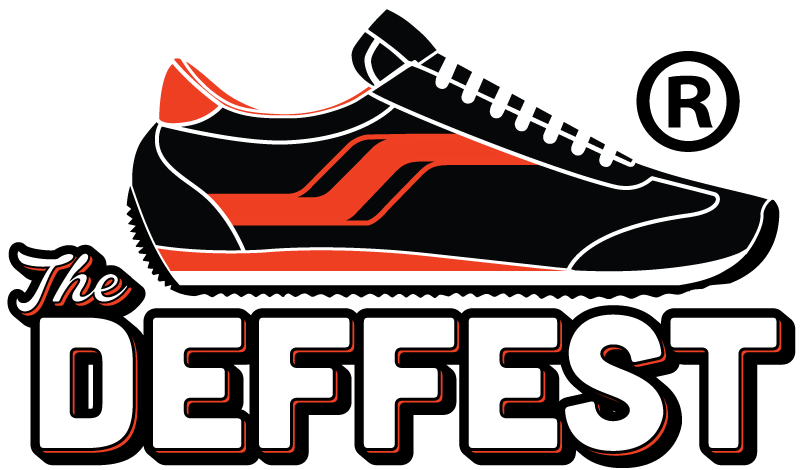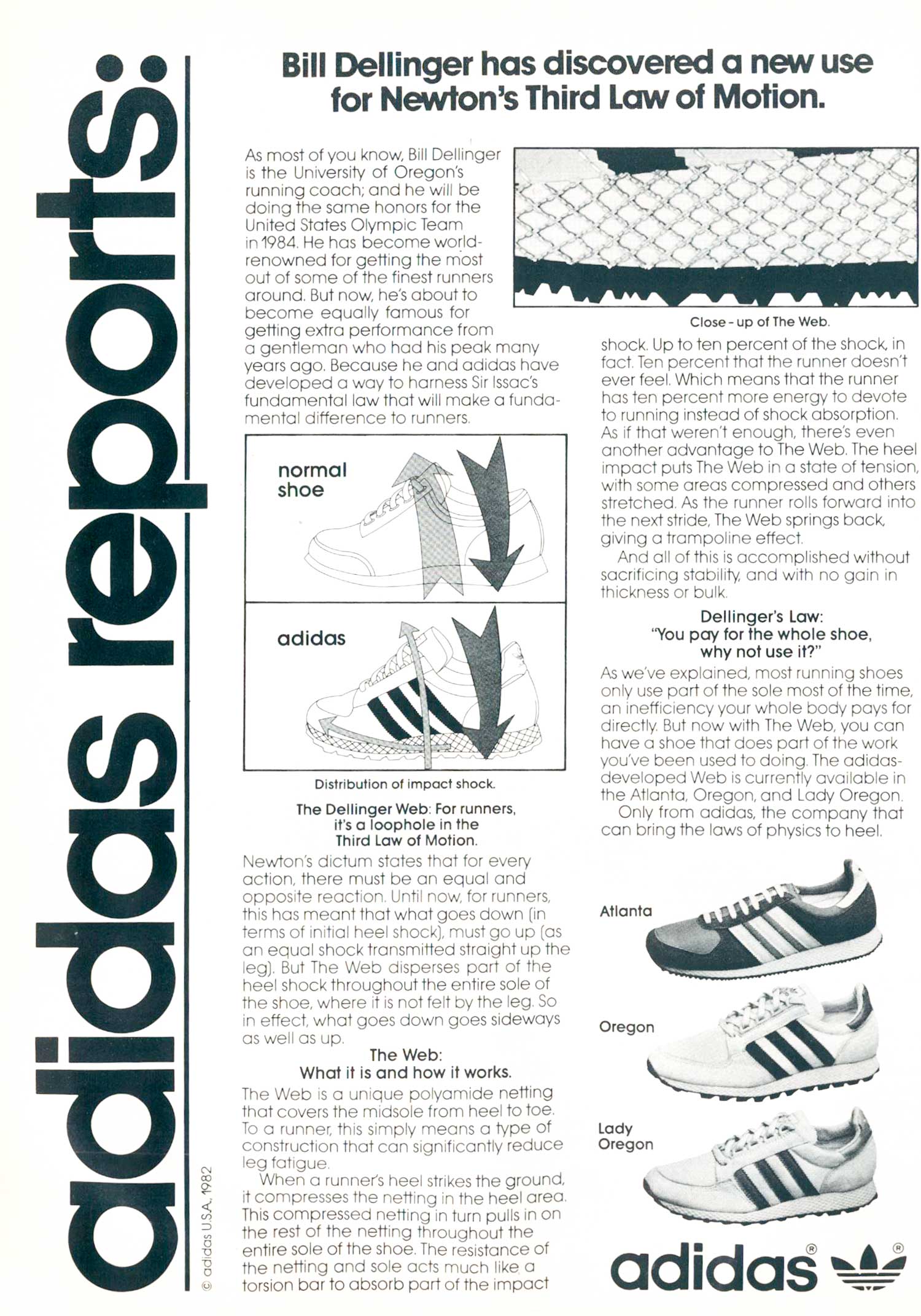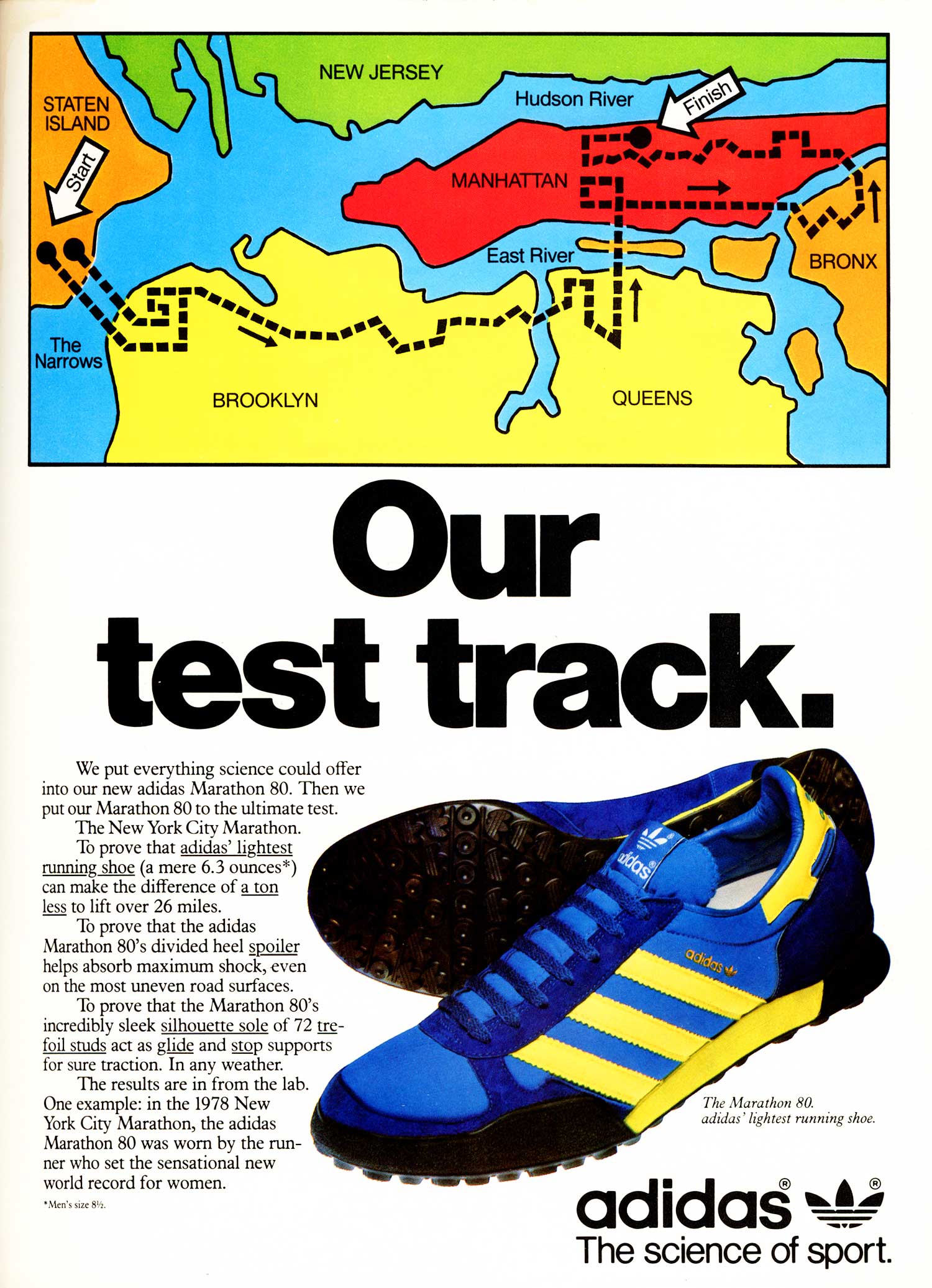Here's another track coach ad, this time Bill Dellinger of the University of Oregon in 1982. Bill Dellinger replaced Bill Bowerman after he retired as coach of the Ducks track team in the 70s. In this ad he is endorsing the adidas Oregon, Atlanta and Lady Oregon shoes.
Ad info is below:
adidas reports:
addas U.S.A. 1982
Bill Dellinger has discovered a new use for Newton's Third Law of Motion.
As most of you know, Bill Dellinger is the University of Oregon's running coach; and he will be doing the same honors for the United States Olympic Team in 1984. He has become world-renowned for getting the most out of some of the finest runners around. But now, he's about to become equally famous for getting extra performance from a gentleman who had his peak many years ago. Because he and adidas have developed a way to harness Sir Issac's fundamental law that will make a fundamental difference to runners.
Distribution of impact shock. The Dellinger Web. For runners, its a loophole in the Third Law of Motion.
Newton's dictum states that for every action, there must be an equal and opposite reaction. Until now, for runners, this has meant that what goes down (in terms of initial heel shock), must go up (as an equal shock transmitted straight up the leg). But The Web disperses part of the heel shock throughout the entire sole of the shoe, where it is not felt by the leg. So in effect, what goes down goes sideways as well as up. The Web: What it is and how it works. The Web is a unique polyamide netting that covers the midsole from heel to toe. To a runner, this simply means a type of construction that can significantly reduce leg fatigue. When a runner's heel strikes the ground, it compresses the netting in the heel area. This compressed netting in turn pulls in on the rest of the netting throughout the entire sole of the shoe. The resistance of the netting and sole acts much like a torsion bar to absorb part of the impact shock.
Close - up of The Web.
Up to ten percent of the shock, in fact. Ten percent that the runner doesn't ever feel. Which means that the runner has ten percent more energy to devote to running instead of shock absorption. As if that weren't enough, there's even another advantage to The Web. The heel impact puts The Web in a state of tension, with some areas compressed and others stretched. As the runner rolls forward into the next stride, The Web springs back, giving a trampoline effect. And all of this is accomplished without sacrificing stability, and with no gain in thickness or bulk. Dellinger's Law: "You pay for the whole shoe, why not use it?" As we've explained, most running shoes only use part of the sole most of the time, an inefficiency your whole body pays for directly. But now with The Web, you can have a shoe that does part of the work you've been used to doing. The adidas-developed Web is currently available in the Atlanta, Oregon, and Lady Oregon. Only from adidas, the company that can bring the laws of physics to heel.
Atlanta
Oregon
Lady Oregon
adidas





